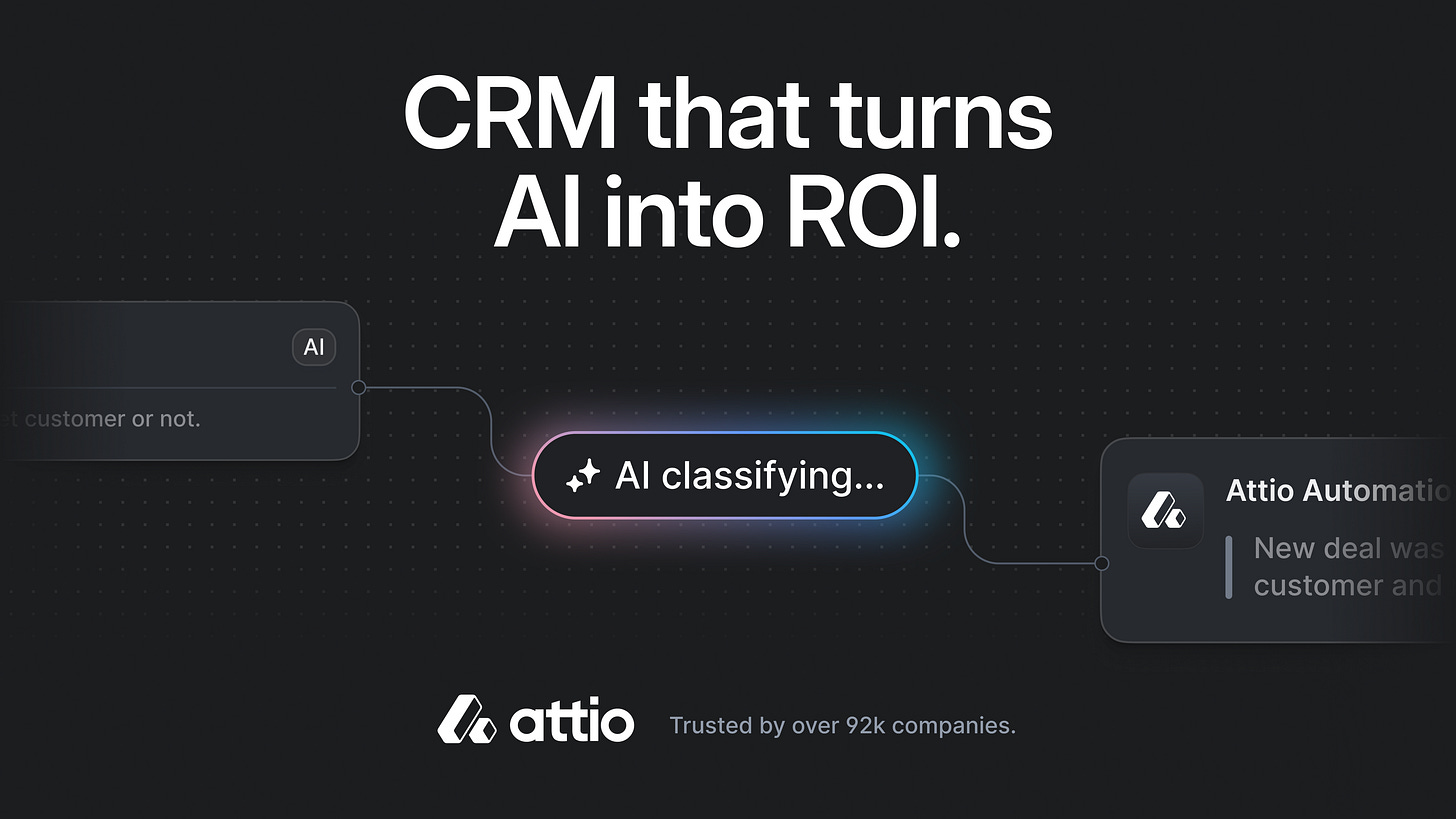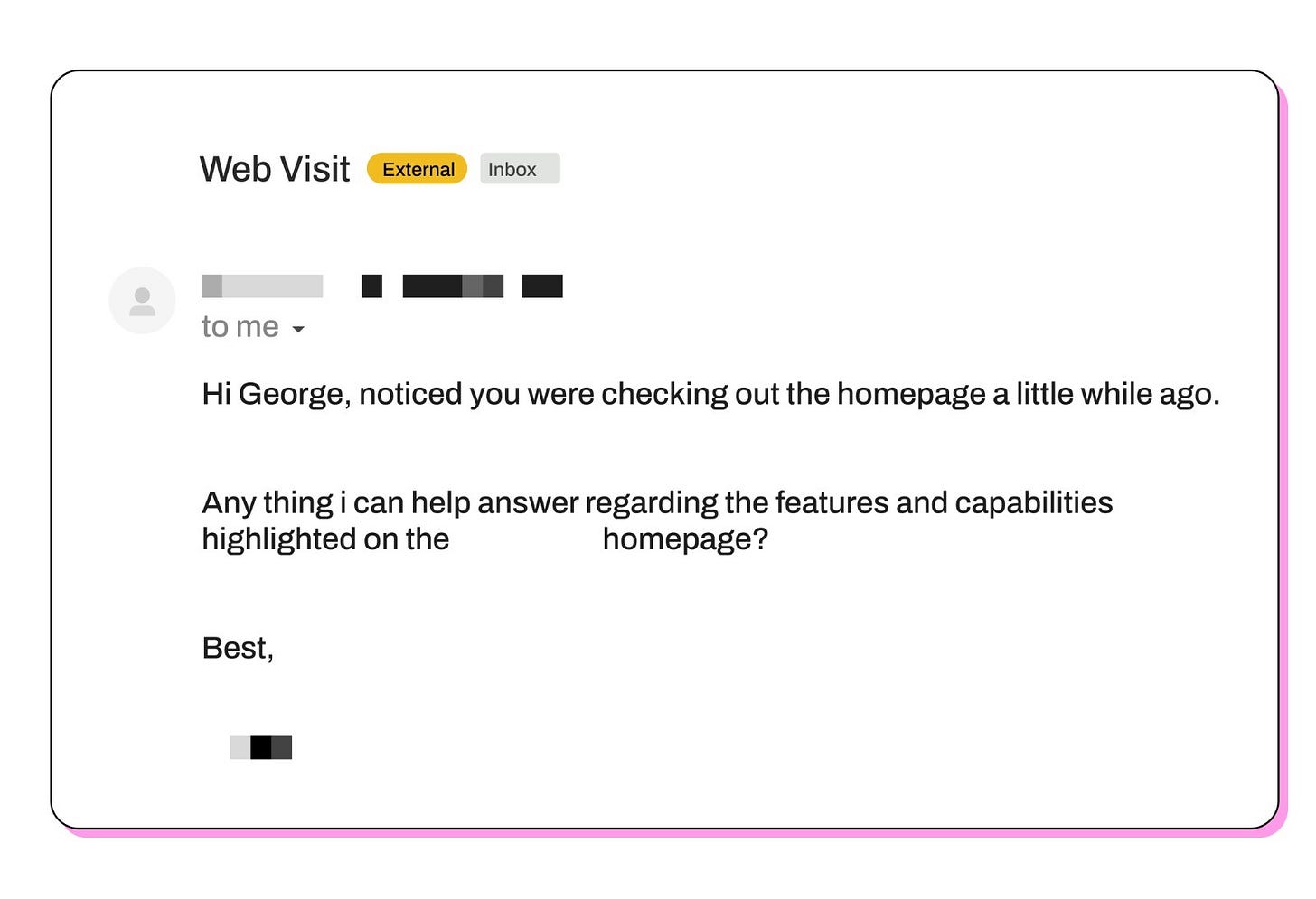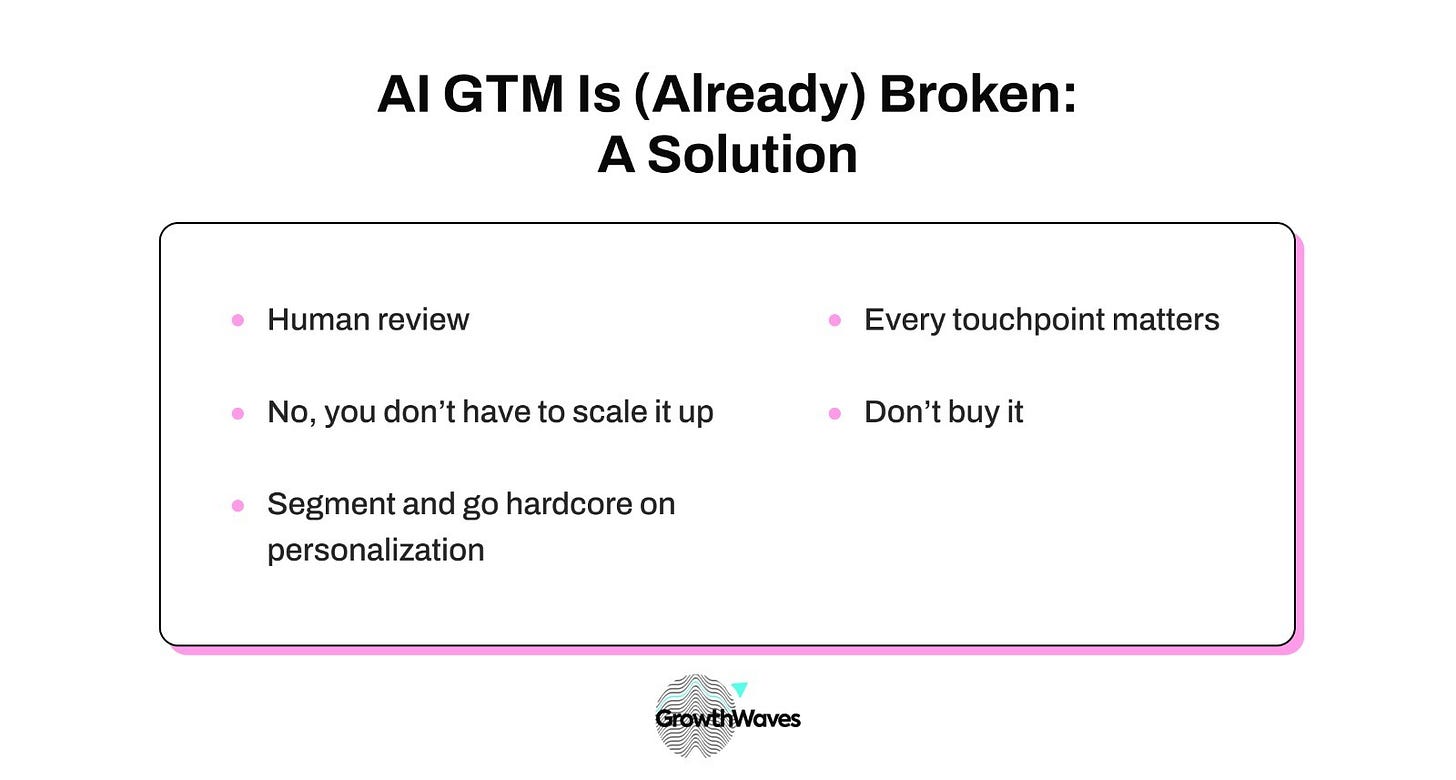How *not to* write emails
AI didn’t ruin GTM—lazy execution did
Last week I visited a SaaS website.
A couple of days later, I received an email from the company.
“Someone thinks they nailed AI GTM,” I thought.
Unfortunately, I doubt that’s an exception.
Many companies try to use AI in their GTM motions.
Some of them do it well.
Most of them shouldn’t be doing it in the first place.
This note is brought to you by Attio.
I launched a new company a month ago.
The CRM we use is Attio.
And I wouldn’t recommend it here if we weren’t customers ourselves.
It’s a modern CRM that doesn’t feel like it was built in 2008.
Clean UX, fast, and powerful where it matters.
Some of the features we rely on:
Enrichment and AI fields that actually save time
Call intelligence to analyze conversations and spot signals
Powerful workflows to automate the boring stuff (e.g., company research)
Sequences you can combine with workflows for outreach, follow-ups, and pipeline building
They also have a solid freemium plan that is perfect for small teams that want to build momentum without the usual CRM friction.
The email
Here’s the email I received:
A few thoughts:
Subject Line
It’s not inherently bad, but it’s not good either.
You can tell that it’s written either by AI or by someone who simply doesn’t give a f*ck. (Or, maybe, from a combination of the above.)
Send From
They use the name of a person from the company, but it’s evident that it’s not that person *actually* sending the email.
That’s okay.
But at least adjust your Send From so that there’s a name and not a naked email that the recipient sees when they open their email.
Personalization
Zero.
Or should I say 0.5 because they added my name in there?
Nice touch, but most B2B buyers won’t hand over a credit card just because you used their name.
That’s marketing 101.
Apart from that, there hasn’t been any effort to personalize the email.
Copy
I don’t know if I should comment on the copy.
It feels weird. Like the AI isn’t doing its job properly, or the human behind it isn’t.
Offer
There’s no offer whatsoever in the email.
CTA
There’s no CTA highlighted in the email.
The next step seems to be for the prospect (that’s me) to reply and engage in a conversation.
So, saying I wasn’t happy when I received the email is an understatement.
You made it to my inbox.
You even got me to open the email, only to delete it immediately and mark it as spam.
Do you want to know what’s behind emails like this?
I would assume:
A Clay workbook set up in a sloppy way
No human review anywhere in the process
An older version of ChatGPT for saving on AI credits
No segmentation based on the weight of the page users visit
No communication between the team running this and the sales team
But also, a LinkedIn GTM bro who shares cool workflows on how their agency kills it (no pun intended) with cold outbound.
Does that sound familiar?
I bet it does because it’s EVERYWHERE nowadays.
The problem
I have my notions as to why that happens.
Most importantly, I want to understand the second-order effects of receiving a cold email like this for the company that sends it.
On a very high level, I’d say:
Brand Implications: Rest assured that your brand is negatively affected by a touchpoint such as this.
Poor Results: I really don’t expect a “campaign” like this to result in any meaningful outcome for the business.
False Narratives: Poor results lead to false narratives as to what works, and what doesn’t
Truisms: These narratives become truisms inside the company, and they’re not easily challenged.
Lost Potential: All that lead to lost potential and the declaration of that particular channel as ‘dead.’
So, the fact that I opened the email only to mark it as ‘spam’ is the least of the effects from a subpar GTM play like this.
Is there an in-house team behind this? An agency?
And is it incompetence that drives this piece of work?
I can’t say for sure.
What I can say is that the what (in this case, ‘signal-based outbound’) is affected by the how.
In other words, this company’s perception of cold email (as a GTM channel) will change based on their experience.
And unfortunately for GTM professionals, this perception can have a real impact on their ability to help other companies succeed with that particular channel.
And it’s not just cold email.
In fact, this note isn’t about cold email at all.
It’s about the fact that our decisions as GTM professionals have implications beyond our micro-cosm of short-term success, results, and keeping our paycheck or retaining a client.
And if that was a problem before AI, it has been amplified many times over after AI came into the mainstream.
The solution
So, seriously, is there a solution?
I mean, not to the cold email problem, but to the bad GTM problem?
To the ‘we need to level the f*ck up’ problem.
I think not all is lost.
But the solution isn’t simple nor one-dimensional.
Especially when boards, the C-Suite, founders, and GTM professionals are under the spell of false promises and buzzwords that have no substance whatsoever.
On a practical level, I think we should start from the basics:
Human Review: Always have a human in the process. They can act as your quality assurance step, even if they slow down the process by a bit.
No, You Don’t Have to Scale It Up: Stop thinking in volumes; even if you have a PLG motion where high volumes are necessary, scale down your ambitions and boards’ expectations and focus on quality.
Segment and Go Hardcore on Personalization: If you can’t do it with AI, do it manually. But don’t create touchpoints like this unless the person experiencing the touchpoint feel that this is for them.
Every Touchpoint Matters: As we discussed in a previous note, every interaction with your brand is a touchpoint, and it can be a hit or miss for developing a relationship with your buyers.
Don’t Buy It: I know what many of the latest GTM tools promise you. I’m using some of these tools every day. Don’t buy all their promises. And think carefully about AI’s role in your GTM strategy.
Even though things move really fast, I think it’s necessary for GTM professionals to take a moment to sit and reflect.
What do we want from the next phase of GTM?
The one that we’re already in.
Do we want to keep our seats at the grown ups’ table?
Or be the team that’s responsible for ‘lead gen?’
Because if that’s what marketing has became, then I’m not very happy to be a marketer anymore.
Final thoughts
Marketers can do better.
We have to.
Most of us haven’t realized how much has already changed.
And that marketing is slowly turning into a team that’s here to serve sales.
If that sounds scary, then we need to do better.
In that context, using AI isn’t wrong.
Underutilizing it and being lazy when it comes to execution is.
Thank you for reading this.
See you next week.




